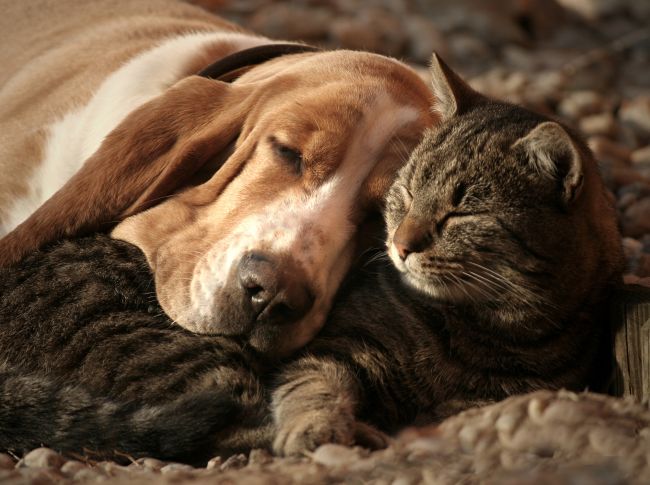
Like humans, cats and dogs emit biologically active chemicals called pheromones. They are designed to communicate, calm or attract other animals of the same species for one purpose or another. For example, female dogs emit pheromones near the chest to help their nursing puppies, causing them to relax and nurse better. The biologically active elements register in the brain a calming effect, creating positive associations and soothing an animal experiencing high tension. Because of this natural response, vets have begun using what they call “pet appeasing pheromones” to settle ruffled animals, and curb their nervous behaviors.
Types of Pheromones
Animals emits all kinds of pheromones, some that calm, others that attract, as well as those that indicate an animal’s territory. Of the types typically given as calming or corrective treatments to animals, there are two main kinds of pheromones: synthetic (these are chemical based, made in labs) and natural pheromones (usually made with plant-based products).
Dog-appeasing pheromones (DAP) mimic the natural pheromones dogs and are administered through diffusers, sprays, wipes or collars. Products containing DAP are believed to significantly lower stress in situations where the dog may be panicking from loud noises, storms, yelling, or separation anxiety. These products Feliway (for cats) and Adaptil (for dogs) are two of the more popular synthetic pheromones.
Plant based: The primary plant-based therapies comes through homeopathic medications combined with herbs such as lavender, chamomile, rosemary, etc. Though these do not seem to work as effectively as the synthetic pet pheromones, herbal remedies are a more natural option.
Uses for Pet Pheromone Products
- Trainers use them when working with pets who struggle with strangers and new environments, or who too tense to lose focus while training.
- Pet-parents use them when going in public places, or entertaining guests or other pets that could cause anxiety in their dog. (They also use them for dogs and cats with nervous habits such as incessant barking, whining, chewing, and scratching, etc.)
- Vets who have to perform difficult procedures or examinations might use pet appeasing pheromones to calm an animal before they commence.
- Groomers find them useful with particularly agitated animals who strongly dislike baths or being held by strangers.

